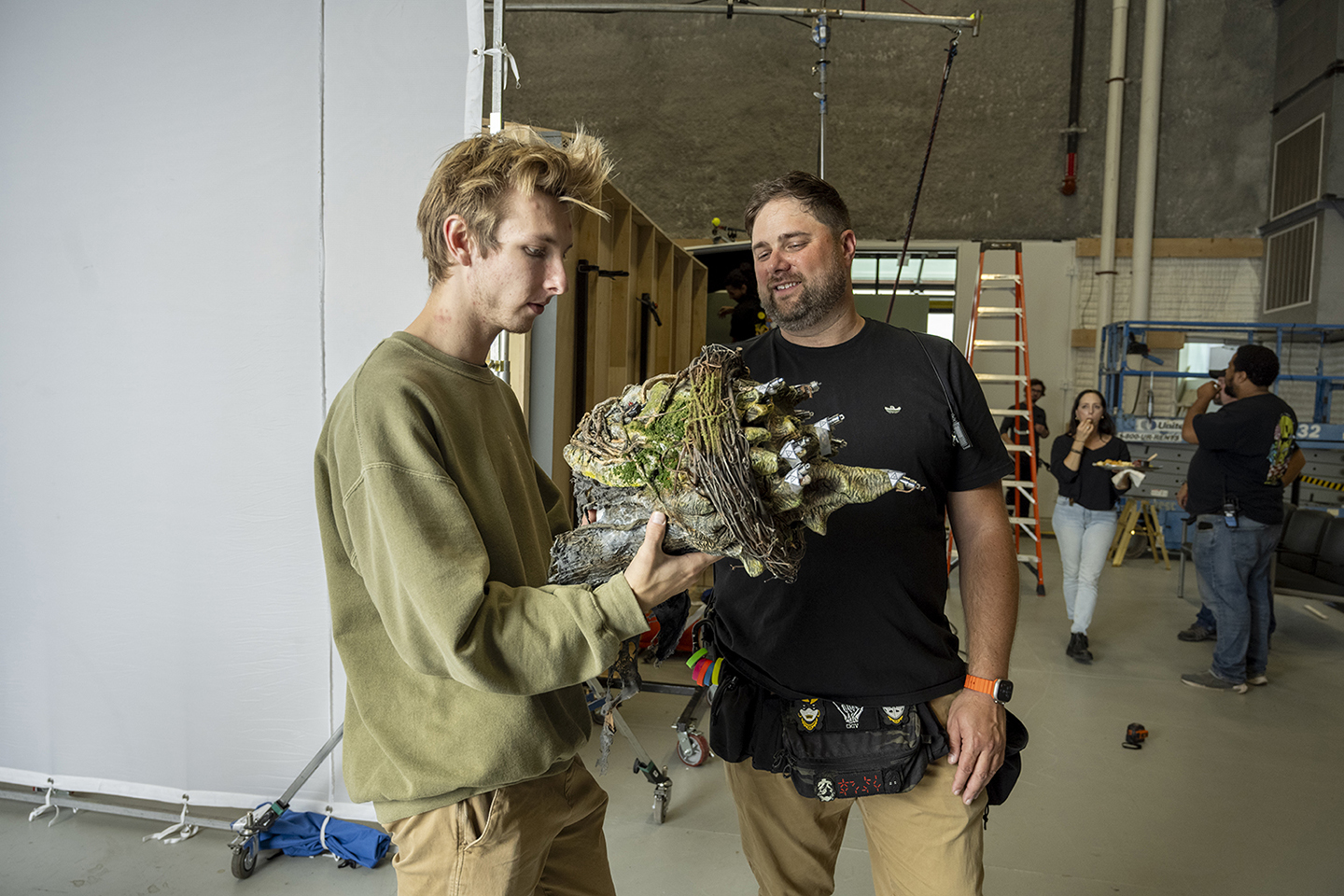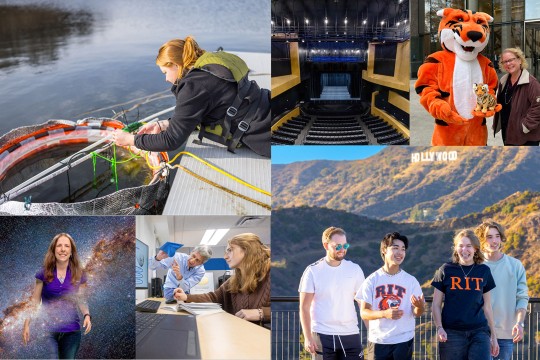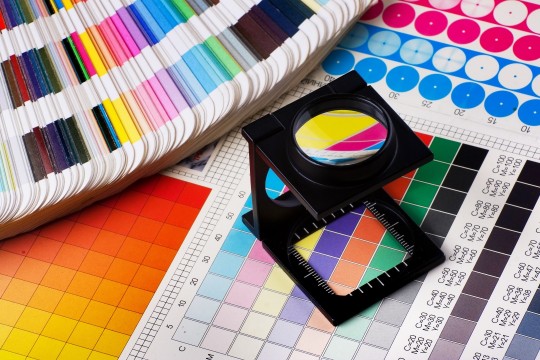Student brings photographic precision to 3D visual effects
Elizabeth Lamark
Kendall Dirks, left, with Assistant Professor Phil Szrama on set of a to-be-release film, in RIT MAGIC Spell Studios' soundstage. Among their responsibilities was adding computer-generated imagery to animate and digitally enhance the qualities of a physical mask designed by a special effects artist.
In his 3D work, Kendall Dirks ’25 (3D digital design) maintains a photorealistic style that reflects side-by-side interests in visual effects and photography.
His zeal for photography dates back to before high school and was used to enhance his 3D work at RIT.
“I’ve always been interested in visual effects for movies and things you can’t normally do in-camera,” Dirks said. “It’s gone in parallel with my photography. I take a lot of my lighting and composition knowledge from photography and translate it to 3D. I just enjoy making stuff that you can’t really take photos of in real life.”
His second year, Dirks took a class — The Collaborative Composite, taught by Assistant Professor Jim Porto — that rekindled his passion for photography and became the gateway to collaborations with photography and film and animation students. The class empowered groups of students from different disciplines to blend photography, video, and 3D into stunning imagery.
Kendall Dirks, Massimo Greco and Jordyn Katz
One of Dirks and his team's photos made for their Collaborative Composite final project.
For the final project, Dirks teamed with Jordyn Katz ’23 (visual media) and Massimo Greco ’24 (advertising photography). They built custom sets and incorporated RIT’s virtual production technology to make composite images featuring garments by New York City fashion designer Elena Velez.
The class became a core experience for Dirks at RIT.
It was a springboard for widening his collaborative network and ingraining himself in RIT’s photo community. He soon enrolled in other photography classes and established connections that led to employment at the School of Photographic Arts and Sciences’ Cage and Imaging Services Lab.
“It’s a nice breadth of different skills you get here,” Dirks said. “That’s one of the main reasons I chose RIT — so I could get exposure to different areas and work with different people. That's exactly what happened and I've enjoyed working with other people and making cool things with different majors.”
This academic year, Dirks worked in a professional setting as a visual effects artist for an in-progress feature film. Phil Szrama, assistant professor of 3D digital design, was the visual effects supervisor for the project and hired Dirks to help with the horror film.
Among Dirks’ responsibilities was adding computer-generated imagery to animate and digitally enhance the qualities of a physical mask designed by a special effects artist.
“One of the big things with coming to RIT’s 3D digital design program is that a lot of the faculty are currently in the industry,” Dirks said. “Making connections, like with this opportunity through Phil, has been great.”
Above: This 3D motion graphics assignment completed by Dirks highlights the design of the Rolleiflex vintage camera.
For his end-of-study capstone project, Dirks made a short film that demonstrates his ability to make a photorealistic 3D environment for the visual effects pipeline. The environment he created tells the story of an abandoned train station enveloped by overgrown forest shrubbery.
The project brings together his intrigue of forsaken places and nature in 3D form.
“That’s what I like about capstone,” Dirks said. “It’s a real industry project in terms of timeline and having to do all these things as if it were a real-world project. But you can make it whatever you want so you can choose all your interests and combine them into one project, get inspired, and make something really cool.”










